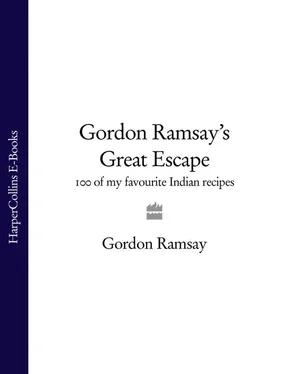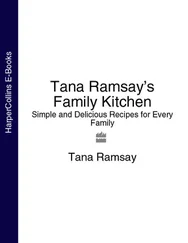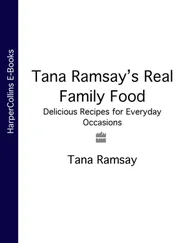Chai– A generic Hindi word for tea, but outside of India chai is commonly used to imply masala chai, a popular Indian-spiced milk tea.
Channa dal– Also known as cholar dal in Bengali, these are skinned and split black gram – they look and taste similar to yellow split peas, but the grains are marginally smaller. They have an earthy and nutty flavour. If you can’t get hold of them, use yellow split peas instead.
Coconut oil– An oil used commonly in southern Indian cooking that has been extracted from coconuts by a process of distillation. It is white in colour when solid but becomes transparent when heated. It has a high burning point, which makes it suitable for frying foods. It is high in saturated fats, and so for health reasons some people prefer to substitute it with other vegetable oils.
Garam masala– An aromatic spice blend that is used both during the cooking process, for a subtle fragrance, and as a garnish, where it is lightly sprinkled over a finished dish to give an added burst of aroma and flavour. Garam means ‘warming’ or ‘hot’ and the blend commonly includes cardamom seeds, cumin or black cumin seeds, nutmeg, black peppercorns, cloves and cinnamon, coriander and fennel seeds, although recipes vary significantly from region to region. Ready-made garam masala is easily found in supermarkets and Asian shops, but some brands tend to bulk up the ingredients with cheaper spices such as ground cumin and coriander.
Ghee– This is essentially clarified butter, which features heavily in northern Indian cooking. You can buy it ready-made in tins at Asian grocers, but I find these have a strong, overpowering aroma. To clarify butter, melt it gently, then pour off the oil through a muslin-lined sieve and discard the milky solids. For health reasons, many Indians now mainly cook with vegetable oil, but they will add a little unsalted butter or ghee to flavour and enrich a dish.
Gram flour– Also known as besan , this is made from finely ground chickpeas or channa dal. It is used in Indian cooking for a variety of purposes, such as soups and curries, and it is an integral part of the batter for bhajis and pakoras.
Grated coconut– Freshly grated coconut is often called for in Indian cooking. To extract the flesh from a coconut, crack it with the back of a strong cleaver or using a hammer. Drain off the coconut water (or save to drink later). You should have two halves of the coconut. Prise out the white flesh with a strong spoon then finely shred or grate using a food processor. Grated coconut can be frozen successfully for at least a month.
Jaggery– An unrefined natural sugar made from the concentrated sap of the date palm. It lends a distinctive sweet taste to both sweet and savoury dishes. Usually sold in solid blocks, jaggery is often grated before it is incorporated into dishes. The darker the colour of the jaggery, the stronger the flavour. You can substitute it with palm sugar or light brown soft sugar.
Kalonji– Also known as nigella seeds, these are black onion seeds with a teardrop shape. Kalonji is frequently used in pickles, chutneys and fish dishes as well as sprinkled on to Indian flat breads.
Karahi– A large, all-purpose rounded pan that is an essential piece of equipment in an Indian kitchen. It is particularly useful for deep-frying as it allows you to use less oil than you would when using a regular saucepan. If you do not already own a karahi, a wok makes a very good substitute.
Mustard oil– The oil extracted from mustard seeds, this has a pungent and slightly bitter taste when raw. Once heated, it develops a distinctive sweet flavour. An acquired taste, it is most commonly used in Bengali cooking for pickling and cooking fish and vegetables. If you can’t find it, substitute it with vegetable or groundnut oil.
Panch phoran– A Bengali spice blend made up of equal quantities of whole fennel seeds, fenugreek seeds, black mustard seeds, cumin seeds and nigella or black onion seeds.
Paneer– This fresh, unsalted curd cheese is widely used in both sweet and savoury Indian dishes. Paneer is very easy to make, requiring only whole milk and either lemon juice or vinegar. The milk is heated almost to boiling point, then removed from the heat and a little lemon juice or vinegar is stirred in. The milk will curdle or separate, and at this point the liquid is strained and hung for a few hours to remove the watery whey, leaving behind the fresh curd. Paneer is best made on the day it is to be eaten.
Rosewater– Made from distilled rose petals, rosewater is produced as a by-product of the process used to make rose oil. The widespread use of rosewater in Indian cooking comes from Persian influence; it is commonly sprinkled over biryani or pilau rice to lend a perfumed aroma to the dish.
Tamarind– Used as a souring agent in Indian cooking, particularly in the south, tamarind pulp is usually sold in blocks. To get tamarind purée, soak the tamarind pulp in water (roughly double the volume of water to weight of pulp) for at least 30 minutes. You should break the tamarind block up with your hands to achieve maximum flavour before straining the purée through a sieve and discarding the husks. More convenient but less flavour-some ready-made tamarind paste is now widely sold in jars in major supermarkets.
Tuvar dal– Dark ochre-coloured split and skinned pigeon pea lentils with a mild nutty and earthy flavour. These versatile lentils are very popular in Indian cooking and are a good source of protein and fibre.
Urad dal– Black gram usually sold split and skinned to reveal the yellow lentils inside. Urad dal is ground with rice to make the classic southern Indian dosa. It is also often fried in small quantities to give a nutty crunch to vegetable or rice dishes.
Конец ознакомительного фрагмента.
Текст предоставлен ООО «ЛитРес».
Прочитайте эту книгу целиком, купив полную легальную версию на ЛитРес.
Безопасно оплатить книгу можно банковской картой Visa, MasterCard, Maestro, со счета мобильного телефона, с платежного терминала, в салоне МТС или Связной, через PayPal, WebMoney, Яндекс.Деньги, QIWI Кошелек, бонусными картами или другим удобным Вам способом.












